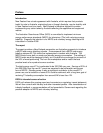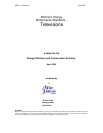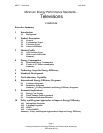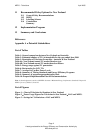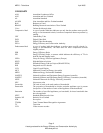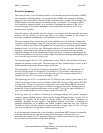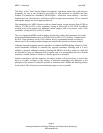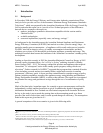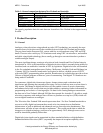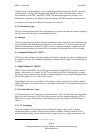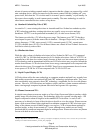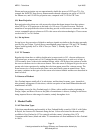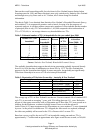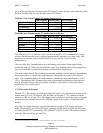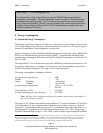
MEPS − Televisions April 2005
Page 6
A study produced for the Energy Efficiency and Conservation Authority by
Wise Analysis Ltd
1 Introduction
1.1 Background
In November 2004 the Energy Efficiency and Conservation Authority commissioned Wise
Analysis Ltd to provide a review of the document “Minimum Energy Performance Standards −
Televisions”
1
which was prepared for the Australian Greenhouse Office by Energy Consult Pty
Ltd. In particular this report was to “provide a New Zealand perspective to the differences
between the two countries with respect to:
• markets, including a quantitative discussion compatible with the section entitles
“Market Profile”
• available technologies
• economic implications (especially costs, and energy savings).”
As background to the Australian report, the Australian National Appliance and Equipment
Energy Efficiency Committee (NAEEEC) had tracked over three years the energy usage − in
particular standby power consumption − of appliances sold in retail outlets across Australia.
NAEEEC also had an intrusive survey of standby consumption in households, and had a
telephone survey done of 800 households to determine appliance ownership and usage. This
meaningful research data became the backbone of the Australian Government’s standby policy
development.
Leading on from this research, in 2002 the Australian Ministerial Council on Energy in 2002
released a policy document Money Isn’t all You’re Saving
2
outlining Australia’s Standby
Power Strategy 2002 – 2012. The strategy outlined the products and appliances that required
“immediate” or “subsequent” action in the standby power program, among which were
televisions
3
. Further research for NAEEEC
4
suggested that a program that examined all modes
of use including on-mode and not just standby modes, might better meet the Australian
government’s efficiency goals. A report was thus commissioned to consider a range of policy
options, including mandatory measures like appliance energy rating labelling and Minimum
Energy Performance Standards (MEPS), to achieve that outcome. The report also investigated
the potential for energy and greenhouse savings through the use of a combination of policy
tools.
Much of the data in the Australian report, for example on power measurements could not be
independently verified, and has been taken as given. In addition the depth of demographic
information obtainable in New Zealand was also limited compared with Australia. However
the key to the study is not so much the starting data as the assumptions made as to future
growth of the stock of televisions, and it’s make up and changes to efficiency. The assumptions
made in this report are given later in 9.1.
A general comparison of the two countries is given in the following table:
1
Minimum Energy Performance Standards: Televisions, NAEEEP Report 2004/11 (prepared for prepared for the Australian Greenhouse
Office
2
Money Isn’t All You’re Saving, Australia’s Standby Power Strategy 2002-2012, MCE
3
Where ever the term “televisions” appears in this report without further descriptive information, the term covers all television types,
including digital, wide screen, plasma, rear projection, CRT, etc.
4
Sustainable Solutions A Study of Home Entertainment Equipment Operational Energy Use Issues. NAEEEC 2003




